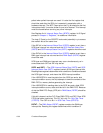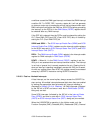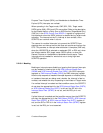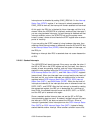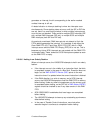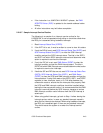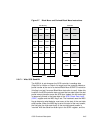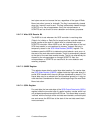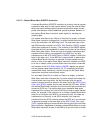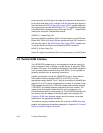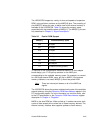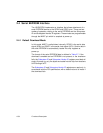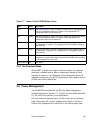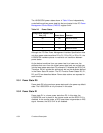2-46 Functional Description
two bytes are sent out across the bus, regardless of the type of Block
Move instruction (normal or chained). The flag is automatically cleared
when the “married” word is sent. The flag is alternately cleared through
SCRIPTS or by the microprocessor. Also, the microprocessor or
SCRIPTS can use this bit for error detection and recovery purposes.
2.2.17.2 Wide SCSI Receive Bit
The WSR bit is set whenever the SCSI controller is receiving data
(Data-In for initiator or Data-Out for target) and the controller detects a
partial transfer at the end of a block move or chained block move
SCRIPTS instruction. When WSR is set, the high-order byte of the last
SCSI bus transfer is not transferred to memory. Instead, the byte is
temporarily stored in the SCSI Wide Residue (SWIDE) register. The
hardware uses the WSR bit to determine what behavior must occur at
the start of the next data receive transfer. The bit is automatically cleared
at the start of the next data receive transfer. The bit can alternatively be
cleared by the microprocessor or through SCRIPTS. Also, the
microprocessor or SCRIPTS can use this bit for error detection and
recovery purposes.
2.2.17.3 SWIDE Register
This register stores data for partial byte data transfers. For receive data,
the SCSI Wide Residue (SWIDE) register holds the high-order byte of a
partial SCSI transfer which has not yet been transferred to memory. This
stored data may be a residue byte (and therefore ignored) or it may be
valid data that is transferred to memory at the beginning of the next Block
Move instruction.
2.2.17.4 SODL Register
For send data, the low-order byte of the SCSI Output Data Latch (SODL)
register holds the low-order byte of a partial memory transfer which has
not yet been transferred across the SCSI bus. This stored data is usually
“married” with the first byte of the next data send transfer, and both bytes
are sent across the SCSI bus at the start of the next data send block
move command.



